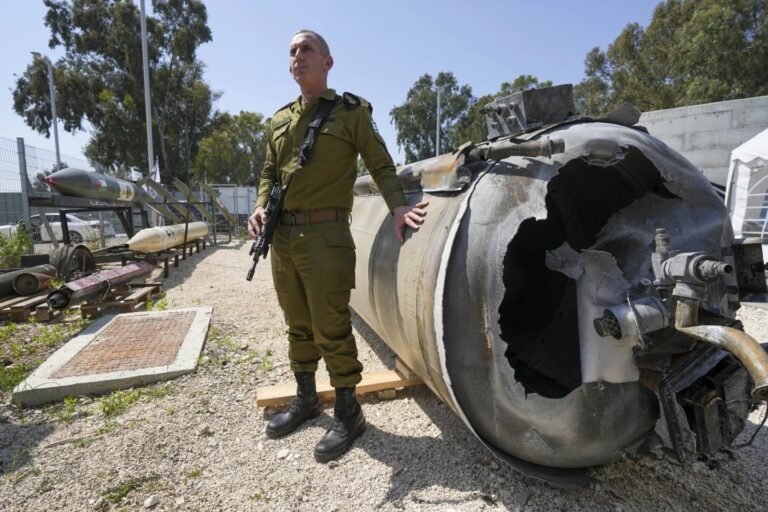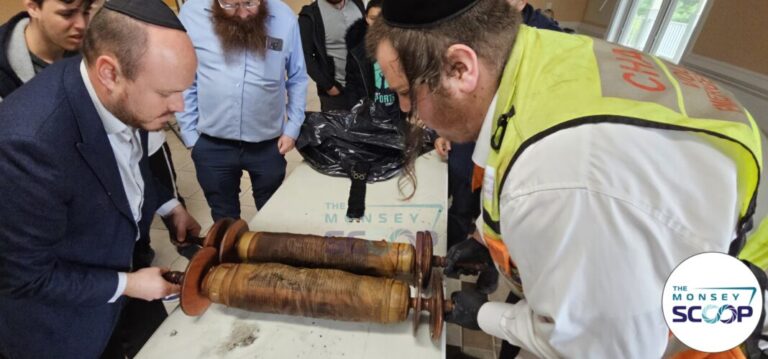by Rabbi Yair Hoffman for the Five Towns Jewish Times
A RELIGIOUS FRIEND WHO WORKS in an office in Manhattan related the following story:
A formerly observant colleague came into my office and said, “You are going to find what I did this past Shabbos pretty bizarre. I had a Slider at White Castle – and they are the best burgers by the way – before I took a trip. After I ate the burger, I bentched and said Tefilas haDerech.”
The incident is certainly quite sad. It should motivate us all to double down our efforts in bringing our estranged brethren back to their Torah birthright. The episode, however, does bring up a halachic question. Should someone who has consumed a treif burger bentch afterward?
A THIEF WHO BLESSES
Many of us are familiar with the verse in Tehillim (10:3) “Botzea beireich ni’aitz Hashem – A thief who blesses blasphemes Hashem.” The Gemorah in brachos uses this verse to describe someone who blesses on stolen food. The Mishna Brurah (196:3) rules that it is not only stolen food to which this verse can be applied – but also to someone who purposefully eats non-kosher food.
Why might this be so?
An analogy might be in order here. When I was much younger, I recall speaking to a World War Two veteran, a D-Day plus three soldier, who cried when he saw young college kids burning the American flag in their protesting the Vietnam War.
He tearfully remarked, “They have no idea what that flag represents, not only to me but to the millions of Americans that fought and died on the beaches of Normandy and throughout Europe.”
Kosher food consumption as well is the flag of the Jewish people. It represents the ideals and spiritual longings and qualities of the Jewish nation. The idea that flouting the flag of the Jewish nation while at the same time reciting a blessing on having flouted it would, quite conceivably, be considered analogous to blaspheming Hashem.
So it would seem, at first glance, that the Salisbury-Steak-consuming accountant should not bentch.
ISN’T THE BUN KOSHER?
But wait – let’s not crunch our numbers too quickly here. From a statistical point of view, a good number of hamburger bun manufacturers produce their buns under kosher supervision, and even if not – most bread manufacturers in the United States do not use non-kosher oil. From a technical point of view – then, one would probably have to bentch over the bun. The bun would probably have been kosher. So granted that the hamburger as a whole is not kosher, but the bun would require a bracha.
On the other hand, the White Castle hamburger was probably placed on the bun while it was still hot. Juices from the meat probably entered the bread rendering a good portion of the bread truly non-kosher.
But what about the dry section of the bun? Was taste infused into it to render it non-kosher? And if the taste of the non-kosher meat is not infused into the bun, is there enough of the dry sections of the buns to create an obligation to bentch?
T’TAAH G’VAR
Let us first familiarize ourselves with the concept of T’taah G’var – the bottom one wins (See Yore Deah SIman 91). Halacha distinguishes between the top layer and the bottom layer when a hot item comes in contact with a cold item. When hot non-kosher meat, for example, is placed on top of something cold that is kosher, the halacha states that the bottom one wins and aside from any oil or juices that mixed into the kosher meat – a taste infusion has not taken place. If it happened the other way around, however, where the bottom piece was hot – then we do assume that a taste infusion has taken place.
Thus, getting back to our case, the top part of the bun would have infused the non-kosher taste of the hamburger paddy – up to the thickness of something called K’dai klipah – a peelable depth. One can assume that most breads or buns can remain intact when peeled to the depth of a Matzah (four millimeters thick). The bottom part of the bun would not have infused taste, because of the concept of T’taah Gvar – the bottom one wins.
HOW MUCH IS A K’ZAYIS
There is, of course, great debate as to the minimum size requirement that is necessary in order to recite an after-blessing. Although the Talmud teaches us that it is the shiur of a k’zayis – the volume of an olive, modern Poskim are unsure as to how large of a volume this is. Most Poskim who follow the Mishna Brurah hold that the shiur for a k’zayis in order to recite Bentching is half of an average size egg – about 28 cubic centimeters.
A quick glance at a photo of a White Castle hamburger reveals that there is certainly a kezayis of bread both on the top bun – even after we remove the peelable layer of bread. There is significantly more than 28 cubic centimeters on either the top bun or the bottom bun.
There is one thing left to do, however. In case our Slider-loving former Yeshiva student might be reading this we should appeal that he come back to the glorious heritage of his forefathers. So we do so in the letter below:
Dear Anonymous Manhattan Accountant (AMA),
Ever since Mount Sinai, your forefathers have been keeping both the laws of kashrus and the laws of Shabbos. Your great-grandfather, your grandfather and your father did so as well. Judaism is not just about rituals, however. It is about a dynamic relationship with G-d. When we keep His laws and pray to Him, including Bentching, we are furthering a relationship with Hashem – cleaving to Him in all areas of life. It is a relationship that has been in existence even before Sinai.
I invite you to a Yeshiva davening where a meaningful lecha dodi is beautifully sung on a Friday evening, or on a day of Rosh Chodesh where King David’s Hallel is so beautifully recited. Get yourself a Chevrusa-ship, a learning partner – in a dynamic and powerful Beis Midrash on a Thursday night and learn Torah with the background noise of hundreds of other Jews studying G-d’s Torah.
We may not have Sliders, but the beauty of Torah will certainly outweigh any appeal of rehydrated meat and onions.
We look forward to having you back,
Hatzlacha.







8 Responses
What if the person is required for medical reasons to eat the treif burger? What if it’s a kosher burger, but it’s Yom Kippur and he’s required to eat for medical reasons? Does he bench?
One who eats on Yom Kippur (say a diabetic) most certainly says yaale V’yova.
And bentches also.
There is a much broader question of making a baracha concurrent with committing any aveyrah….are this issues of maris ayin? Are you perhaps perpetuating a rationalization that the baracha somehow mitigates the severity of the illicit action?
Sorry I find it out of taste to make a halachic “diyun” of a tragedy which is encompassing so many of Klall Yisrael. Would you consider the possibility to use a fire which burns a a family house with occupants R”l for birchas bore more hoesh?
A person who benches on trief at least has some connection to yiddishkeit, A person who does not doesnt even have that
To Mr. London:
Your analogy is inappropriate….no rational yidden would delay making Havdalah motzi Shabbos until Hatzalah reported a fire at a nearby residence so they could rush out and make the baracha on boreh mo’eore hoesh.
To Mr. London:
Your analogy is inappropriate….no rational yidden would delay making Havdalah motzi Shabbos until Hatzalah reported a fire at a nearby residence so they could rush out and make the baracha on boreh mo’eore hoesh.
If you’ve ever run into the shoneh u’pairish type, you’ll realize that this particular chazer fresser was merely trying to tweak his frum colleague. These guys are ridden with guilt which they continually attempt to suppress by “proving” to themselves that they are right, and one way they do that is by taunting those of us who remain frum.
Rest assured that this rosho neither benched nor said tefillas haderech after he pigged out on his tarfus.